Holly reminds us of Christmas, the most wonderful time of the year for a lot of people. The mere mention of holly brings to mind the conical trees with dark green, spiny leaves and bright red berries. If you’re looking for hedging plants, holly is a perfect choice. Not only is it decorative, but it can also deter intruders with its prickly leaves. A holly hedge will surely update the look of your backyard with its vibrant colours whilst keeping you safe and giving you privacy.
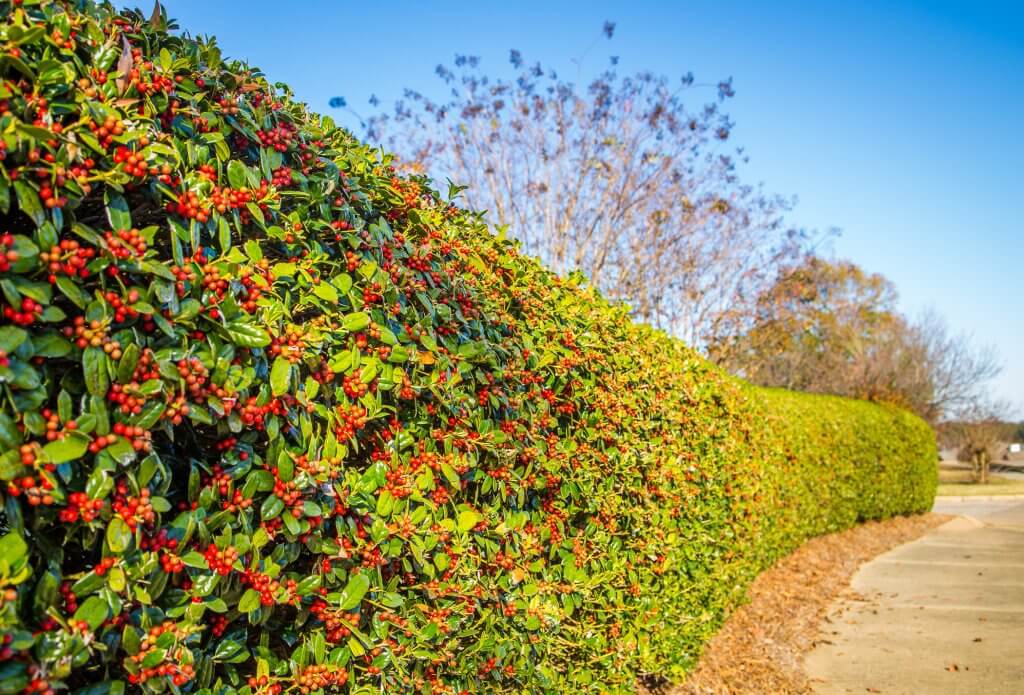
Characteristics of Holly
Holly is a tree or shrub with many species ranging from short shrubs (about 2 metres high) to tall trees (up to 40 metres high). It can be evergreen which means the plant’s leaves remain on the tree all year long whilst some hollies can be deciduous which means the plant’s leaves seasonally fall off. But most hollies are evergreens that flourish in sunlight or partial shade and well-drained soil.
Now, let’s make it a little more complicated and more tongue-twisting. Aside from holly being either evergreen or deciduous, it can also be either dioecious or monoecious. A mouthful, yeah? A holly that is dioecious has separate female flowers on one plant and male flowers on another. So a male holly and a female holly should be planted close to each other. You need them both for pollination or fertilisation, which results in berries.
Usually, one male holly can pollinate or fertilise 5 to 10 female plants, but sometimes, it can pollinate up to 20! On the other hand, a monoecious holly has male and female flowers on the very same plant, which makes it self-fertile. So even if it’s planted in isolation, it can still produce berries.
A holly’s berries are toxic to humans when ingested but not so for animals. The berries are an essential source of food for birds. Each berry typically contains four seeds each, and the birds assist in scattering them for germination. Different varieties of hollies produce different colours of berries, including pink, blue, yellow, orange, and white.
Holly is an excellent evergreen hedging plant not only because of its glossy, prickly leaves and beautiful berries but also because it is low-maintenance. Unlike other hedging plants, holly grows slowly, needing infrequent pruning.
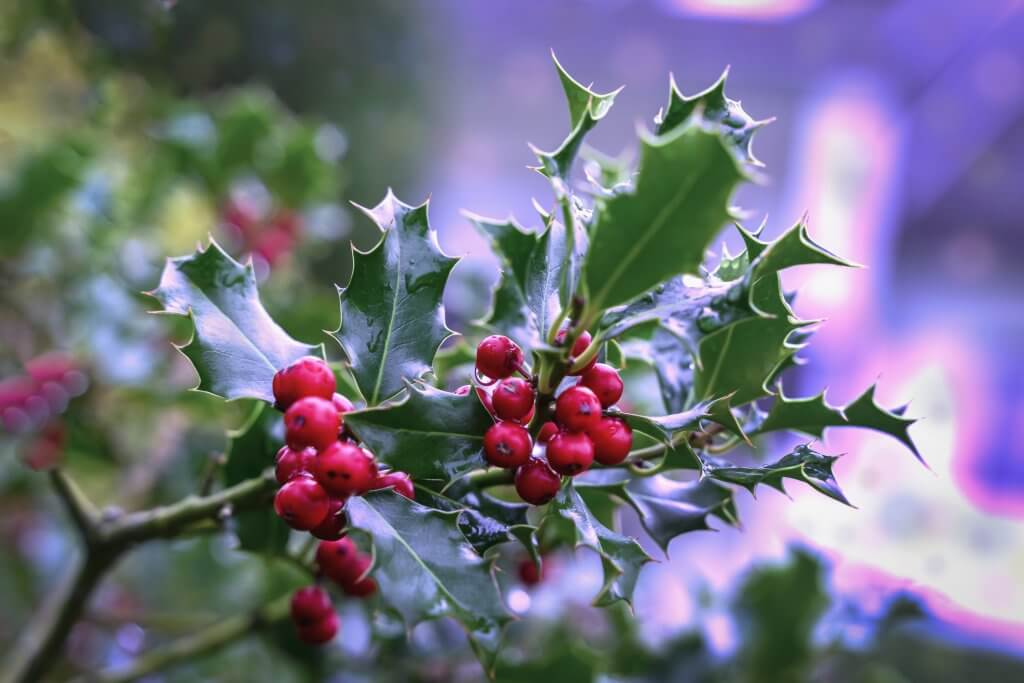

How to Select Your Holly
Holly, or Ilex, is made up of 400 to 600 species varying in shape, size, and leaf colour. Fret not because we have rounded up the best hollies for hedging. For a more beautiful hedge, you can mix and match the different types of hollies to get the most of its colours.
English Holly
If you want a classic, beautiful ornamental hedge, then this one’s for you. An English Holly is suitable for hedge heights of up to four metres. It creates a decorative display, forming an effective privacy screen and windbreak. Its glossy red berries are in beautiful contrast with its dark green leaves. This is the variety of holly that symbolises Christmas. Because of its slow growth rate, an English Holly hedge plant can take its time to reach your desired hedge height. But some nurseries sell it as a ready-made and instant hedge. An English Holly is pretty versatile as it thrives in sunny and partially shaded locations and can grow in normal or moist soil. It can also cope with urban pollution and the salty winds of coastal areas.
Japanese Holly
This variety of holly is perfect for low growing hedges of up to one metre. Japanese Holly is popular in garden designs because it can establish a structure by making a tight border, enhancing the presence of footpaths and larger plants. The beauty of Japanese Holly is in its seasonal white spring flowers, followed by its black berries in autumn that remain until winter. Unlike the prickly leaves of its other holly sisters, its leaves are small and oval-shaped.
Silver Holly
This variety of holly possesses the same versatility as an English Holly. The difference lies in its appearance: a Silver Holly has gorgeous glossy leaf colour of dark green with cream-coloured margins. Silver Holly can be planted in normal and clay soils. Like the English Holly, it can thrive in partially shaded or sunny locations. It can also grow in urban and coastal areas. True to the character of hollies, Silver Holly is low-maintenance as it is slow-growing only 10 to 20 centrimetres a year. It is easily maintained at 1-5 metres.
How to Grow Your Holly
Now the fun part begins! After choosing which type of holly to get, it’s now time to plant it. The best time for planting is in spring or autumn because of relatively low temperatures and higher rainfall, making settling into a new location less stressful for the holly.
Here are the steps to plant and grow your holly. You just need a rotary hoe, spade, mulch, and rich compost.
- Enhance the soil around your chosen area with rich compost and other amendments. Till the compost into the soil at least eight inches deep. This will improve draining, and at the same time, add nutrients to the soil. Remember that hollies prefer well-drained soil and partial shade or full sun.
- Dig a deep trench. For a single-row hedge, dig about one and a half to two times as wide as the root balls of the holly. If you’ll have a staggered hedge, dig two trenches one foot apart.
- If the hollies are in containers, break up their root balls. Score or slice through the root balls with a garden cultivator or a sharp object to spread the roots.
- Place the hollies in the trench you dug. For small varieties of hollies, place them 15 centimetres apart, and for larger hollies, about 50 to 75 centimetres apart.
- Return the soil that you removed when you dug the trench. Make it a little compact — tight but still airy.
- Water the trench for about 20 minutes right after planting.
- Apply a mulch around the holly hedge about 5 to 10 centimetres thick. The mulch will regulate the moisture and soil temperature.


Holly Hedge in Backyard 
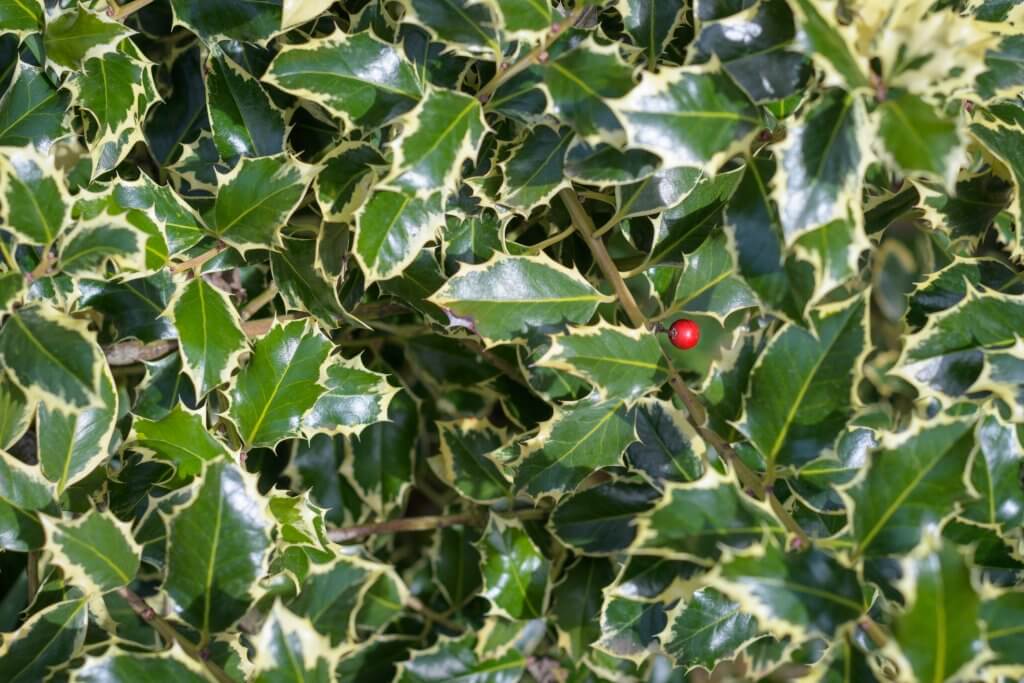
Holly
How to Care For Your Holly Hedge
Whilst hollies need little maintenance, you still need to care for them. During the first week after planting, water your holly hedge daily. After that, do it twice a week for the next four weeks. During summer, provide extra waterings on a weekly basis. Water daily if there’s drought.
Fertilise your holly hedge in spring and autumn to keep them healthy and at their best. As for pruning, there’s no right or wrong answer. It’s up to you when to prune your holly hedge. Just make sure that you prune the branches back to a growth bud because if you remove a branch or stem, it may not grow and fill back in.
Certain fungal diseases can also affect hollies. These are:
- Tar spot. This usually occurs with cool, moist springtime temperatures. It begins as small yellow spots on the leaves, which turns reddish-brown to black. Eventually, the spots fall out, causing holes on the leaves. If this happens, remove the infected leaves.
- Canker. A canker produces sunken areas on the stems. Prune the infected stems to save the holly hedge.
Pests can also affect hollies. The most common are scale insects, mites, and holly leaf
miners.
- Scale. For minor scale infestations, prune the affected areas. For heavier infestations, you can use horticultural oil on new growth to kill adult scales and their eggs.
- Mites. They are the common causes of discoloration and spots on the leaves of hollies. Ladybugs can help reduce the numbers of mites, or you can spray the hollies with soapy water or insecticidal soap.
- Leaf miner. It is responsible for causing ugly yellow to brown trails on the center of leaves. You can destroy the infested leaves with a foliar insecticide.

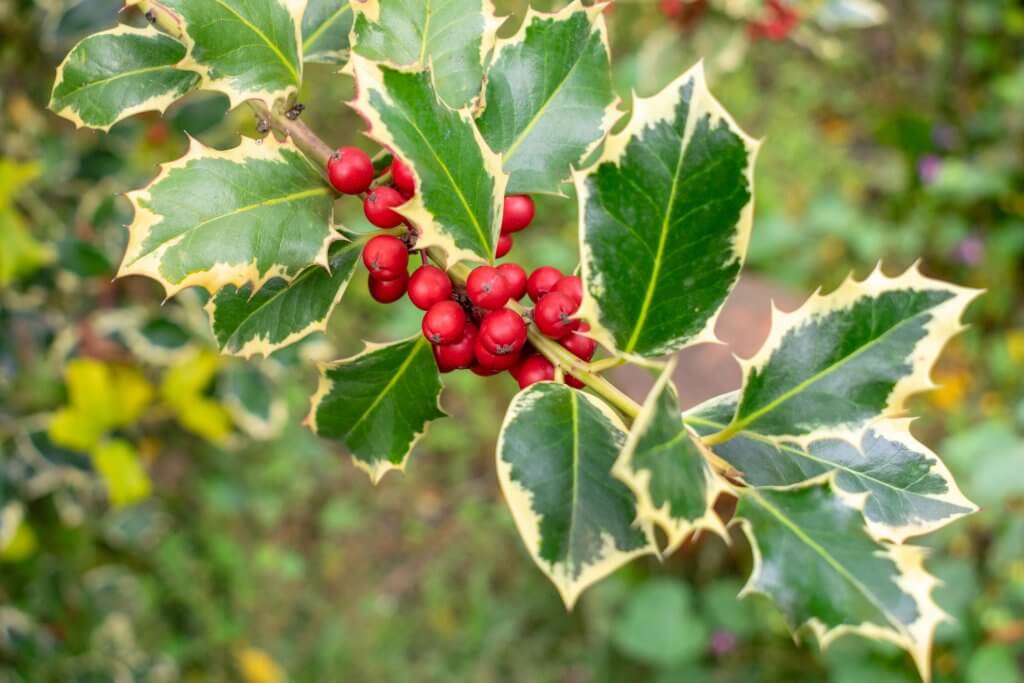
Holly Hedge Berries Close Up 
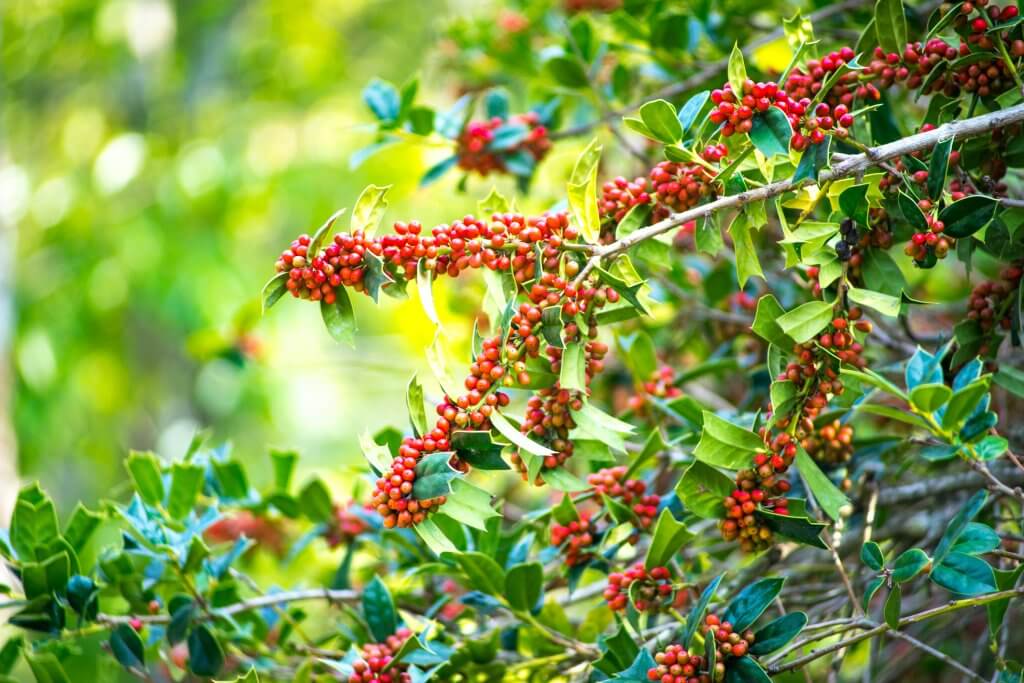
Holly Hedge Berries
Final Note on Holly Hedge
We’ve talked about the benefits of having holly hedge plants. But there’s just one teeny problem: rabbits love them! Rabbits tend to damage the main trunk of hollies. Just like anything else in life, if there’s a problem then there’s a solution — rabbit guards!
Don’t let rabbits stop you from planting hollies. The benefits far outweigh the disadvantages. Soon enough, you’ll be decking your halls with boughs of holly. Or if you’re a Potterhead, you can have a holly wand just like Harry!
[elementor-template id=”4604″]
[elementor-template id=”6387″]
